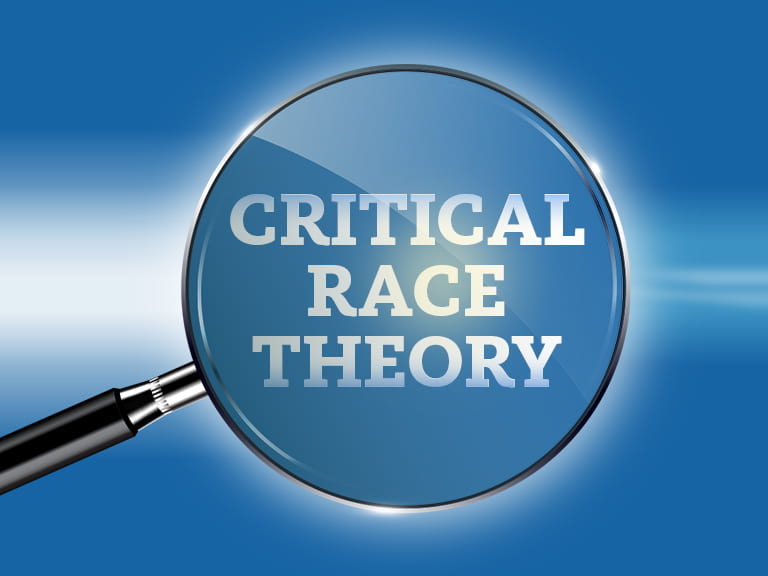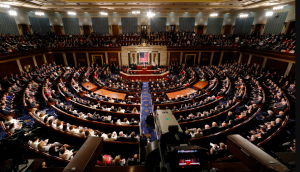By Aubrey McGregor Moore
Introduction
In the past decade, policy towards public education standards and curriculum has attempted to improve outcomes in schools. Common Core State Standards and the Every Student Succeeds Act that passed in 2015 are both pieces of legislature that attest to this. Updated standards and increased funding have the goal of ensuring students have the skills necessary to start college or
a career immediately after high school regardless of demographics. As a country riddled with division and prejudice, striving to improve education is an important step in achieving equality. Classrooms are therefore a microcosm of society. Students share experiences through everyday discussion between one another, but also in the analysis of literature and current events facilitated by their instructor. More often than not, topics like race and sexual orientation make their way into the classroom with increased exposure from social media. These discussions have ended poorly for marginalized students. Introducing ideologies surrounding race, sexuality, and gender into a classroom setting may help alleviate the strain placed on these communities by providing students with the tools to have productive and safe conversations and relationships with their peers.
Critical Race Theory
Critical Race Theory (CRT), for example, is the consistent active search and identification of racism in the foundations of American society while disassembling and improving these systems. Despite this theory having 40 years of research and development, policy-makers around the United States are working to ban it from the curriculum in primary and secondary education. Currently, eight states have passed anti-CRT legislation while 20 states are developing
frameworks for similar policy. [2] Organizations like Parents Defending Education gather evidence against teachings like CRT, calling it “woke jargon” and claiming it is meant to mask a hidden agenda. [7]
Thesis
Misinformation spread through media, particularly news channels and social media, motivates state lawmakers into banning critical race theory over the fear that it will spread the idea of “white hatred”. The process of banning critical race theory in classrooms inhibits equitable democracy and creates an uneducated subsequent labor force entering the political realm, perpetuating the cycle of injustices committed against communities of color while dishonoring their legacy and their fight against this very issue.
Misinformation Surrounding CRT
Potential candidates and in-office lawmakers use negative inflammatory language to validate their position against CRT. [6] Rather than learning about the purpose of CRT, states who have banned this framework understand it as an attack on the United States’s government, and therefore, their individual character. On one hand, some politicians argue that CRT is unpatriotic and divides students. For example, in April 2022, the Georgia senate passed a bill that limits discussion of race in the classroom in order to uphold the integrity of America. [4] On the other hand, there are politicians that may actively spread misinformation to promote their platform. This negative spin on the theoretical framework spreads fear to the public through news sources, like Fox News, who mentioned CRT 1300 times within four months. [6] They report that it
encourages shaming of white students for historical racism in America and provokes feelings of guilt. A new documentary, “Whose Children Are They?”, inspired one of the most recent articles Fox News published on their site. [2]
There are now multiple mediums through which news and information spreads: television, personal mobile devices, radio, and physical newspapers. Posts that do not present immediate harm or explicit hate are not typically fact-checked on social media. According to Facebook, fact-checking partners are, “not meant to interfere with… opinions and debate.” [3] It is important to uphold the First Amendment of the United States in all forms, but it allows for misinformation to consume sources online. A study done by MIT professors in 2018 showed that “falsehoods are 70% more likely to be retweeted on Twitter than the truth, and reach their first 1500 people six times faster.” [1] CRT serves to educate students on the actions and policies that have caused systemic racism in order to demolish and improve a government that serves a diverse population. Providing American youth with complete information concerning their history allows them to consider their impact on society, and make more informed decisions as functioning citizens once they reach adulthood. It shows that institutions are meant to be critiqued so they can be changed into a better version than they were before. [5] Having a teacher as a facilitator for these discussions allows students to explore these topics in a safe environment that encourages empathy and respect.
Stakeholder Analysis
Local and state politicians who have jurisdiction over their local school boards are the individuals who have the ability to enact the bans on CRT. Depending on how educated policymakers are on critical race theory, they steer the direction of the conversation surrounding it. These are people that are posing the framework as a defining problem in their campaign that they are aiming to fix. In this lens, lawmakers can decide to ban CRT, do nothing, or instill it into the state curriculum. Typically, in conservative areas of the United States, banning CRT from classrooms is desired, while in more liberal areas, the conscious inclusion of CRT in public education is encouraged. By listening to the community, little to no issues pop up from this decision for the executors.
Banning critical race theory directly impacts students and has a ripple effect on the rest of the community because of it. Censoring student discussion continues to form a taboo around race, allowing confusion and inequitable treatment toward people of color. If people are to better understand each other, effective communication is vital. When the subject of identity is obstructed by law to discover and understand at a young age, it can be hard for students to feel confident in themselves, their heritage, and their culture within the context of their community. It can create conflict and isolation between individuals and their peers. [8] Small studies have shown including CRT in classrooms increases school attendance and academic performance. [1]
Conclusion
The main issue is a lack of understanding concerning the CRT curriculum. Politicians and school officials should undergo training to effectively employ the curriculum in the classroom, with an emphasis on the fact that shame is not the goal. Banning CRT from being taught in classrooms is essentially barring free speech within a school setting. It is critical to uphold this right and to make students feel heard in classrooms because it improves academic success and the educational gap between people of color and white classmates. Tough conversations between children in this generation will advance equitable policy supporting people of color, and highlight the importance of their stories, struggles, and triumphs in the United States.
Endnotes
- Barnum, Matt. “Research Suggests Students Benefit from Discussing Racism.” Chalkbeat, 9 July 2021, www.chalkbeat.org/2021/7/8/22569197/critical-race-theory-bans-racism schools-research.
- Brown, Sara. “MIT Sloan Research about Social Media, Misinformation, and Elections.” MIT Sloan, 5 Oct. 2020, mitsloan.mit.edu/ideas-made-to-matter/mit-sloan-research about-social-media-misinformation-and-elections.
- Economou, Elizabeth. “Critical Race Theory Exposed in Detail in New Documentary, ‘Whose Children Are They?’” Fox News, 13 Mar. 2022, www.foxnews.com/lifestyle/ critical-race-theory-documentary-children.
- “Facebook – Meld je aan of registreer je.” Facebook, www.facebook.com/ unsupportedbrowser?id=673052479947730.
- Oladipo, Gloria. “Georgia Senate Passes Bill Limiting Discussion of Race in Schools.” The Guardian, 2 Apr. 2022, www.theguardian.com/us-news/2022/apr/02/georgia-race teaching-schools-bill-governor.
- Ray, Rashawn, and Alexandra Gibbons. 2021. “Why Are States Banning Critical Race Theory?” Brookings. July 2, 2021. https://www.brookings.edu/blog/fixgov/ 2021/07/02/why-are-states-banning-critical-race-theory/.
- Sawchuk, Stephen. 2021. “What Is Critical Race Theory, and Why Is It under Attack?” Education Week. May 18, 2021. https://www.edweek.org/leadership/what-is-critical race-theory-and-why-is-it-under-attack/2021/05.
- “Understanding Woke Jargon.” n.d. Parents Defending Education. https://defendinged.org/ resources/understanding-woke-jargon/?
gclid=CjwKCAjwuYWSBhByEiwAKd_n_sqePqSNfu2pjSuz4qqbitOYd0hTXK7yX Ee9lEF1KRPMhwRW1p3WuBoCDeAQAvD_BwE.
- “Why Critical Race Theory Is Essential to Education.” Ideas and Creations Blog, 1 Feb. 2022, www.luther.edu/ideas-creations-blog/?story_id=965149.





Be First to Comment